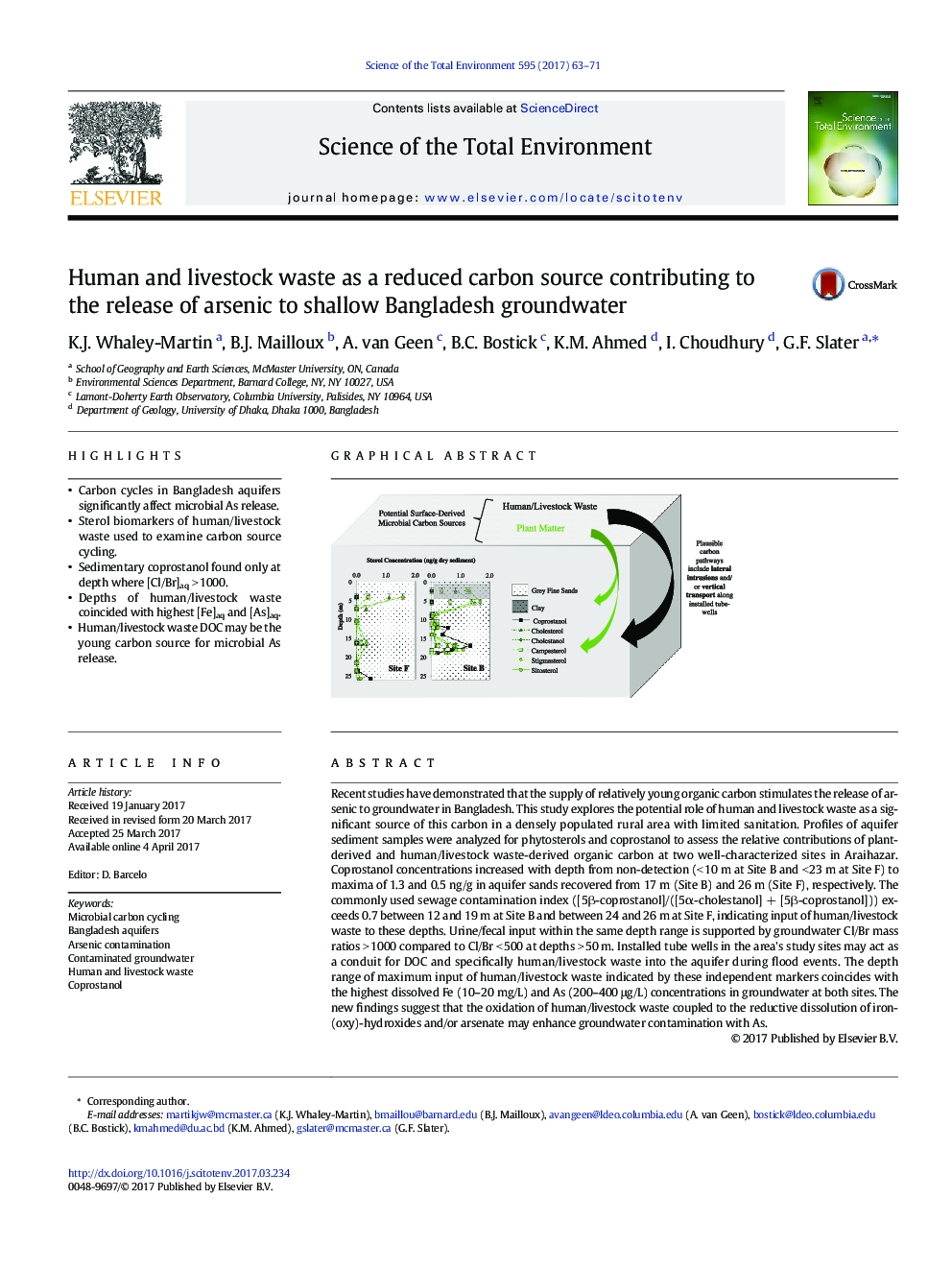| Article ID | Journal | Published Year | Pages | File Type |
|---|---|---|---|---|
| 5751263 | Science of The Total Environment | 2017 | 9 Pages |
â¢Carbon cycles in Bangladesh aquifers significantly affect microbial As release.â¢Sterol biomarkers of human/livestock waste used to examine carbon source cycling.â¢Sedimentary coprostanol found only at depth where [Cl/Br]aq > 1000.â¢Depths of human/livestock waste coincided with highest [Fe]aq and [As]aq.â¢Human/livestock waste DOC may be the young carbon source for microbial As release.
Recent studies have demonstrated that the supply of relatively young organic carbon stimulates the release of arsenic to groundwater in Bangladesh. This study explores the potential role of human and livestock waste as a significant source of this carbon in a densely populated rural area with limited sanitation. Profiles of aquifer sediment samples were analyzed for phytosterols and coprostanol to assess the relative contributions of plant-derived and human/livestock waste-derived organic carbon at two well-characterized sites in Araihazar. Coprostanol concentrations increased with depth from non-detection (< 10 m at Site B and < 23 m at Site F) to maxima of 1.3 and 0.5 ng/g in aquifer sands recovered from 17 m (Site B) and 26 m (Site F), respectively. The commonly used sewage contamination index ([5β-coprostanol]/([5α-cholestanol] + [5β-coprostanol])) exceeds 0.7 between 12 and 19 m at Site B and between 24 and 26 m at Site F, indicating input of human/livestock waste to these depths. Urine/fecal input within the same depth range is supported by groundwater Cl/Br mass ratios > 1000 compared to Cl/Br < 500 at depths > 50 m. Installed tube wells in the area's study sites may act as a conduit for DOC and specifically human/livestock waste into the aquifer during flood events. The depth range of maximum input of human/livestock waste indicated by these independent markers coincides with the highest dissolved Fe (10-20 mg/L) and As (200-400 μg/L) concentrations in groundwater at both sites. The new findings suggest that the oxidation of human/livestock waste coupled to the reductive dissolution of iron-(oxy)-hydroxides and/or arsenate may enhance groundwater contamination with As.
Graphical abstractDownload high-res image (238KB)Download full-size image
